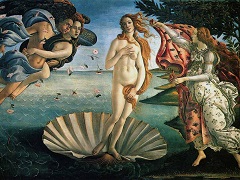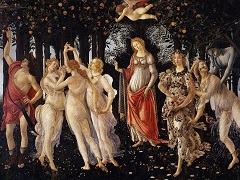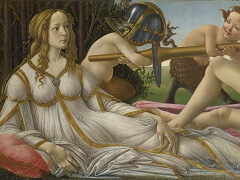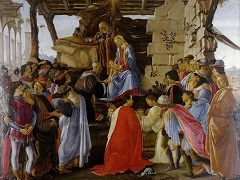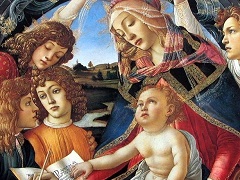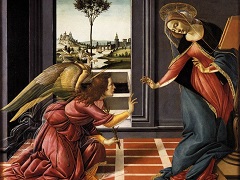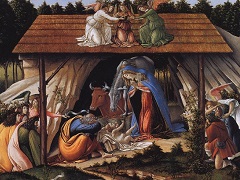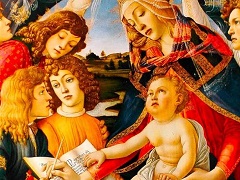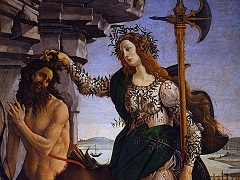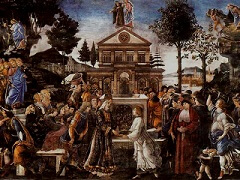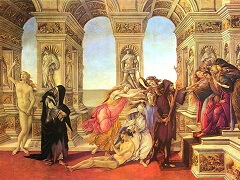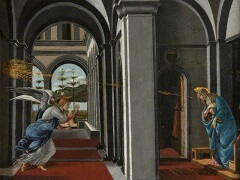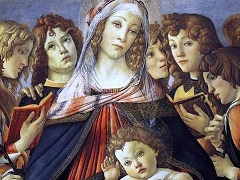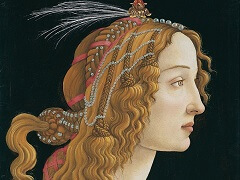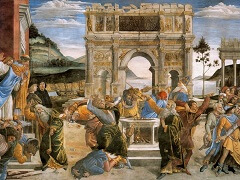St. Sebastian, 1474 by Sandro Botticelli
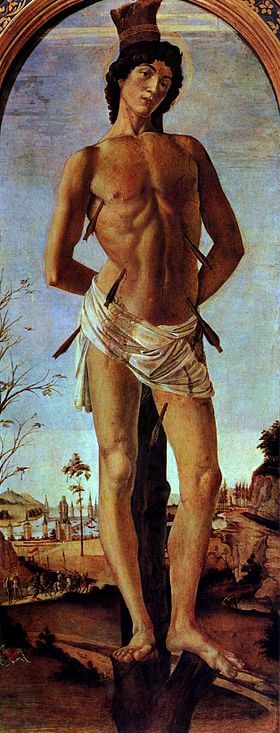
St Sebastian had been one of the most revered saints in Italy since the Middle Ages as patron saint of those afflicted with the plague. In 1474, Botticelli painted his St Sebastian, which was put up with great ceremony in 1474 on one of the pillars in Florence's Santa Maria Maggiore church on 20th January, the feast day of the saint. The picture's location explains its unusually long format. It had been common custom since mediaeval times to affix paintings to the pillars of church interiors. In the course of time, however, these pictures were removed from their original locations, so that the interior view of churches as they appear today, with their unadorned pillars, in fact presents an inaccurate picture.
Legend has it that the Roman emperor Diocletian had archers fire arrows at St Sebastian on account of the latter's Christian belief, an ordeal which the saint survived, however. Since the Middle Ages, the arrows of his ordeal had been equated with the arrows of the plague which God hailed upon the earth in punishment of mankind. The consequence of this image was that St Sebastian became one of the most revered patron saints of those afflicted with the plague. 15th-century Florence was regularly afflicted with bouts of the plague, causing many altars and chapels to be erected in honour of St Sebastian and decorated with his portrait. Such endowments were made in order that prayers be offered up for deliverance from the plague, or else in gratitude for past preservation from it; Botticelli's picture would presumably have served such a purpose.
St Sebastian is Botticelli's first male nude. The artist is following classical ideas in his harmonious proportions and balanced "contrapposto". However, a sense of uncertainty is revealed in the foreshortening of the saint's feet, confirming this picture as belonging to Botticelli's early phase.

